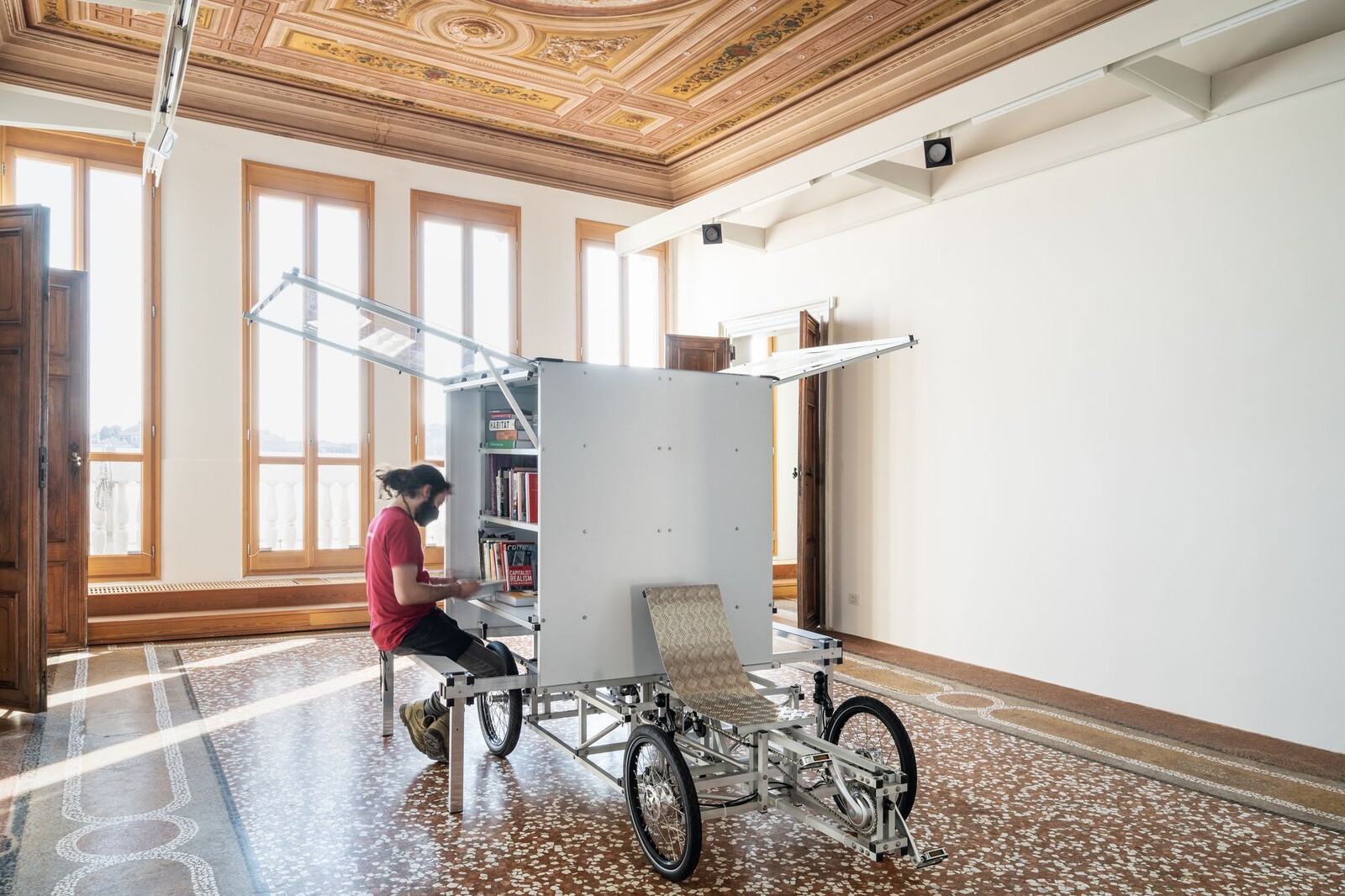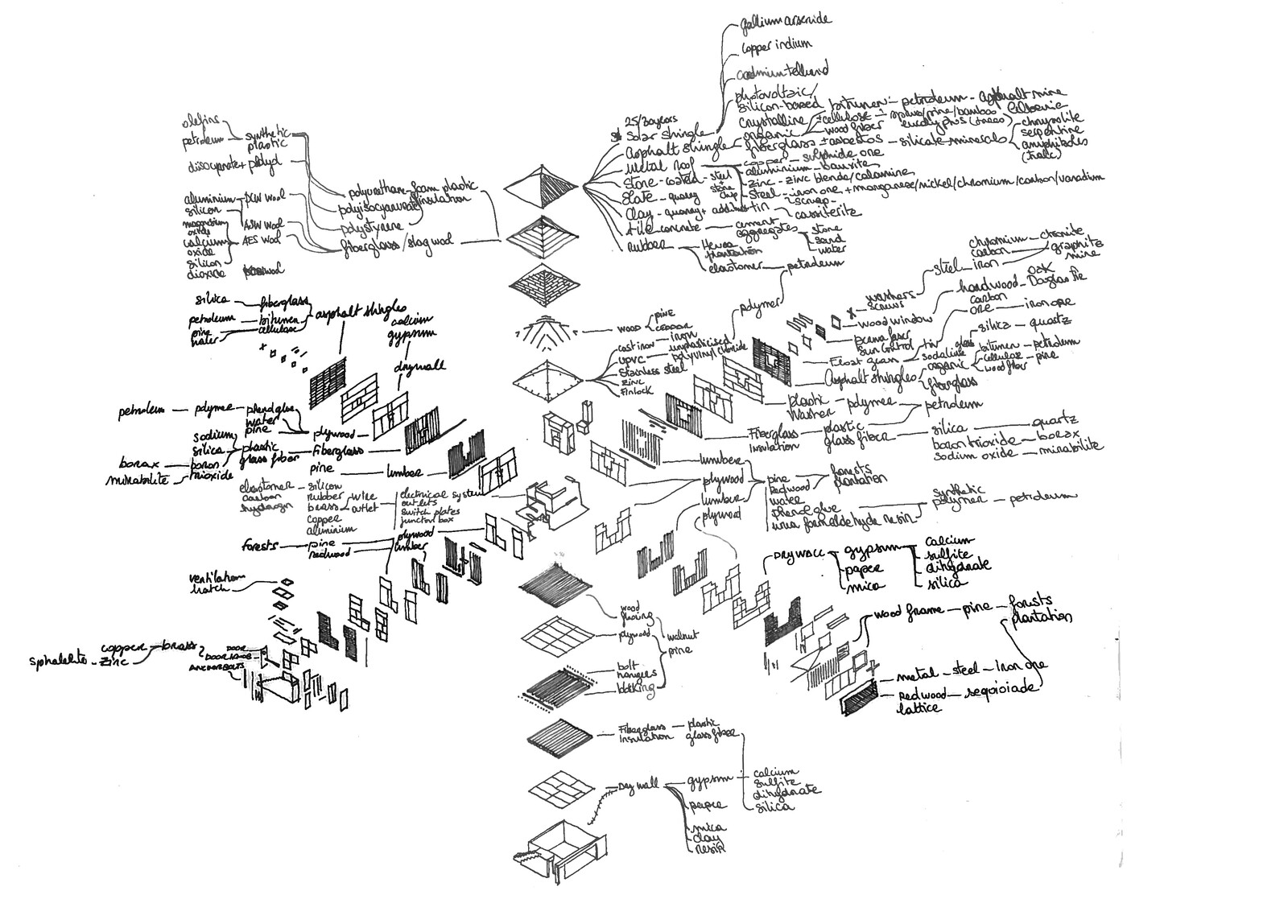Greenwashing, as defined by architect and writer Luke Jones in his contribution to Non-Extractive Architecture, Volume 1, is the “shallow or cynical deployment of faux-ecological imagery” considered in contrast to “green authenticity.” Edited by Italian architecture and research studio Space Caviar, this sleek collection of astute texts accompanies an exhibition, residency, and conference series organized by the Venetian arm of V–A–C Foundation, an organization co-founded in 2009 by Leonid Mikhelson and Teresa Iarocci Mavica to promote Russian contemporary art. Mikhelson is also the founder and chairman of Novatek, Russia’s largest independent producer of natural gas.1 In late 2018, Novatek finished building a $27-billion plant in the Arctic Circle that, combined with two more planned facilities, is expected to produce 60 million tons of liquid natural gas per year by 2030.2
These facts are not mentioned in Non-Extractive Architecture, Volume 1. The book brings together 18 eloquent contributions, largely essays, from important voices in architectural academia to advocate for new forms of ecologically sound architecture practice. Its opening sections explain how extraction might be a useful lens through which to read architectural history and to reformulate its future. Intentionally or otherwise, they also provide the reader with an intellectual framework for the arguments that might be deployed against the book itself. The introduction by Space Caviar co-founder Joseph Grima, who curates this project, alongside standout essays by Mark Wigley and Charlotte Malterre-Barthes, expand architectural thinking beyond the space and lifespan of an individual building, to encompass the extractive processes that are involved in its production, construction, maintenance, demolition, and beyond. “Every element of the built environment is the product of extractive processes, from steel bolts to concrete blocks, wood flooring to drop ceilings,” writes Malterre-Barthes. Wigley concurs: “It is crucial to understand that the real construction site of a building […] extends to all the places from which it has been sourced and all the places for which it could be a source of waste.”
The essays make common-sense points that have potentially radical consequences for an industry and communicative culture that promotes the completed building—photographable, habitable—as the beginning and end of architecture. A more pronounced attention to the processes and energy flows involved in architectural production is a necessary conceptual shift in the context of the climate crisis and calls for climate justice. As well as material histories, the book pays attention to social histories of architecture, with essays by Dele Adeyemo and Swarnabh Ghosh noting how human labor, specifically that of racialized and gendered people, has also been extracted throughout architectural history.
All of this is to say that Non-Extractive Architecture, Volume 1—independently an excellent book with necessary ideas—is dead-legged by the institutional structure and funding which allowed it to exist in the first place. This entanglement of culture and fossil capital is nothing new—theorists of “petroculture” argue that they have been inseparable since the birth of the US petroleum industry 150 years ago.3 But reading the book, one can’t help but feel a mounting frustration in light of the broader context: higher ecological stakes and ongoing government inaction, despite discursive progress. What’s more, the contradiction here seems more pronounced than most. We’re not talking about a minor sponsor of a loosely affiliated exhibition: Non-Extractive Architecture is funded—albeit indirectly, via a non-profit arts organization—from wealth created by the extraction of fossil fuels.
Drawing attention to this information, none of which is particularly hard to find, isn’t to call out the contributors to the book. Rather, I want to think through this tension and consider what we might do with it by looking at two of the book’s key ideas. The first—essentially the book’s central thesis—is neatly summarized in this line by Malterre-Barthes: “It is not enough for designers to call for increased use of wood without strengthening forest stewardship, restoration, conservation, and increased transparency in wood products.” Pay attention to the structures that produce the product, in other words, and not just the product itself. Of course, a book is not a building and publishing is not architecture. But ideas both travel light and hold weight; hence the effectiveness of greenwashing. Contemporary decolonization movements are aware of this. They center on cultural institutions and universities—the movement to decolonize curricula in the UK, for instance, or organizations such as Decolonize this Place in the US. How knowledge is produced and what historic or ecological structures underpin the production of that knowledge are important and, in the case of a project about non-extraction funded by the proceeds from extraction, are too contradictory to go unaddressed.
Following from this, a second idea is from Grima’s introduction: “Architecture, as a discipline, has a historical disposition toward self-isolation.” The failure to address the material conditions that lead to the production of the Non-Extractive Architecture project—and perhaps even the choice to pursue it at all—indicate further “self-isolation”; in this case, isolated from other projects seeking greater accountability and responsibility in cultural work. Dozens of movements across the globe are aiming to disentangle intellectual and artistic production from industrial-scale polluters by calling for divestment or the ending of sponsorship contracts. Non-Extractive Architecture should be aligned with such approaches. As it is, the project perpetuates a polluted model for cultural funding in which its survival is dependent on the very structures that it seeks to dismantle. It’s difficult to see beyond this bind. But acknowledging that it exists is a start, and one hopes that the project’s forthcoming volumes will begin to address it.
Non-Extractive Architecture, Volume 1: On Designing Without Depletion was published by V-A-C Foundation and Sternberg in May 2021.
Joel K. Bourne Jnr., “See Russia’s massive new gas plant on the Arctic coast,” National Geographic (March 22, 2019): https://www.nationalgeographic.com/environment/article/sabetta-yamal-largest-gas-field.
Karina Baptista, “Petrocultures” in Global South Studies (undated): https://globalsouthstudies.as.virginia.edu/key-concepts/petrocultures.

